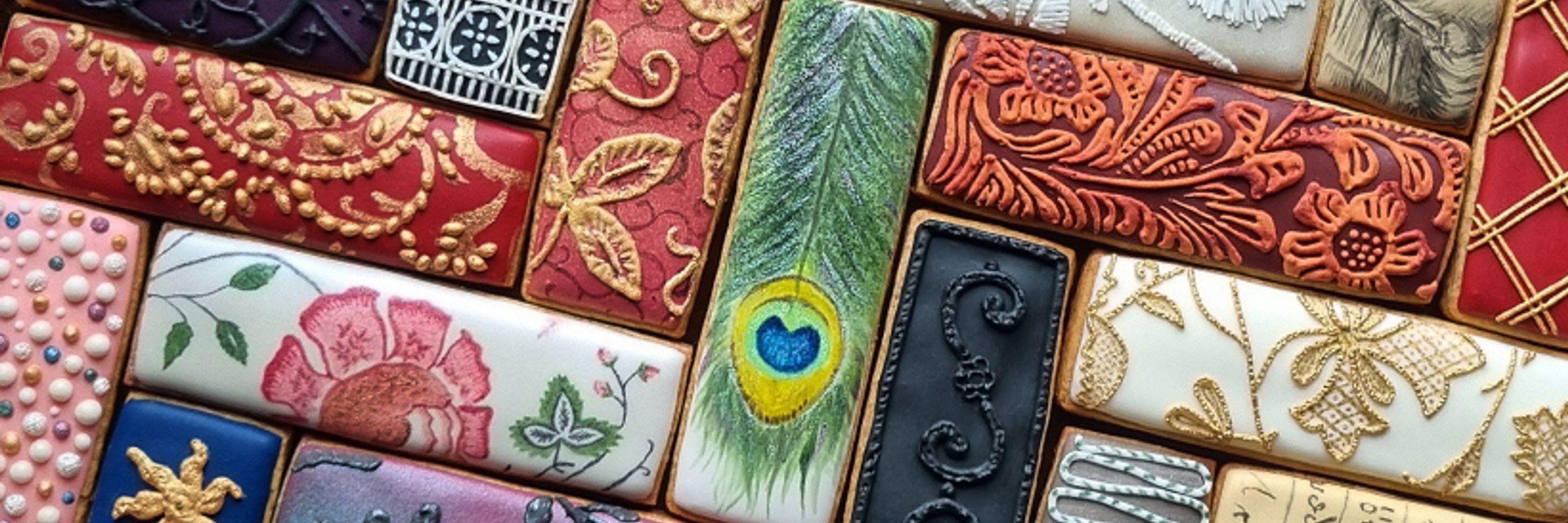
This biscuit (cookie) set is inspired by some of his many tile designs. 🍪

This biscuit (cookie) set is inspired by some of his many tile designs. 🍪
If you’d like to see more in the meantime:
- ellahawkins.com
- Instagram – @ellamchawk
- Facebook – Ella Makes Cakes
Happy National Biscuit Day 2025! 🍪

If you’d like to see more in the meantime:
- ellahawkins.com
- Instagram – @ellamchawk
- Facebook – Ella Makes Cakes
Happy National Biscuit Day 2025! 🍪
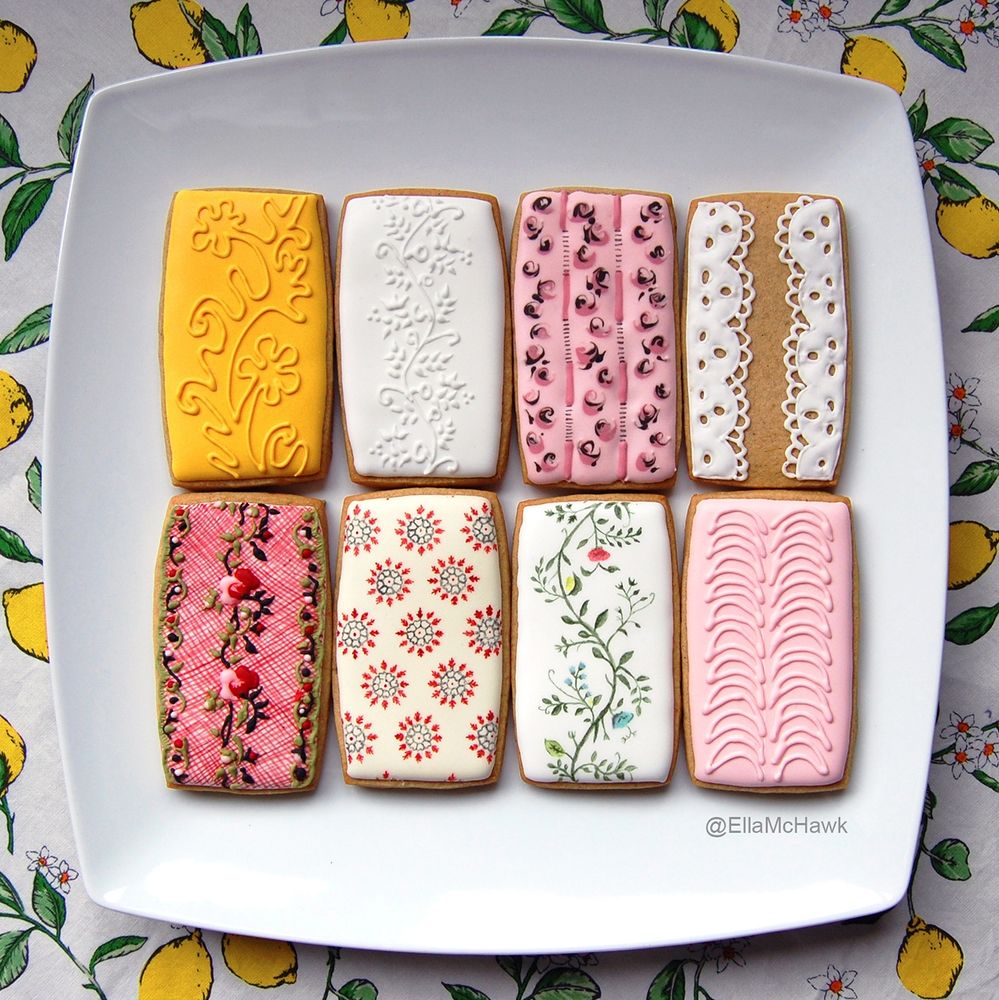
The biscuit recipe was inspired by flavours from the same period: honey, ginger, and clove.
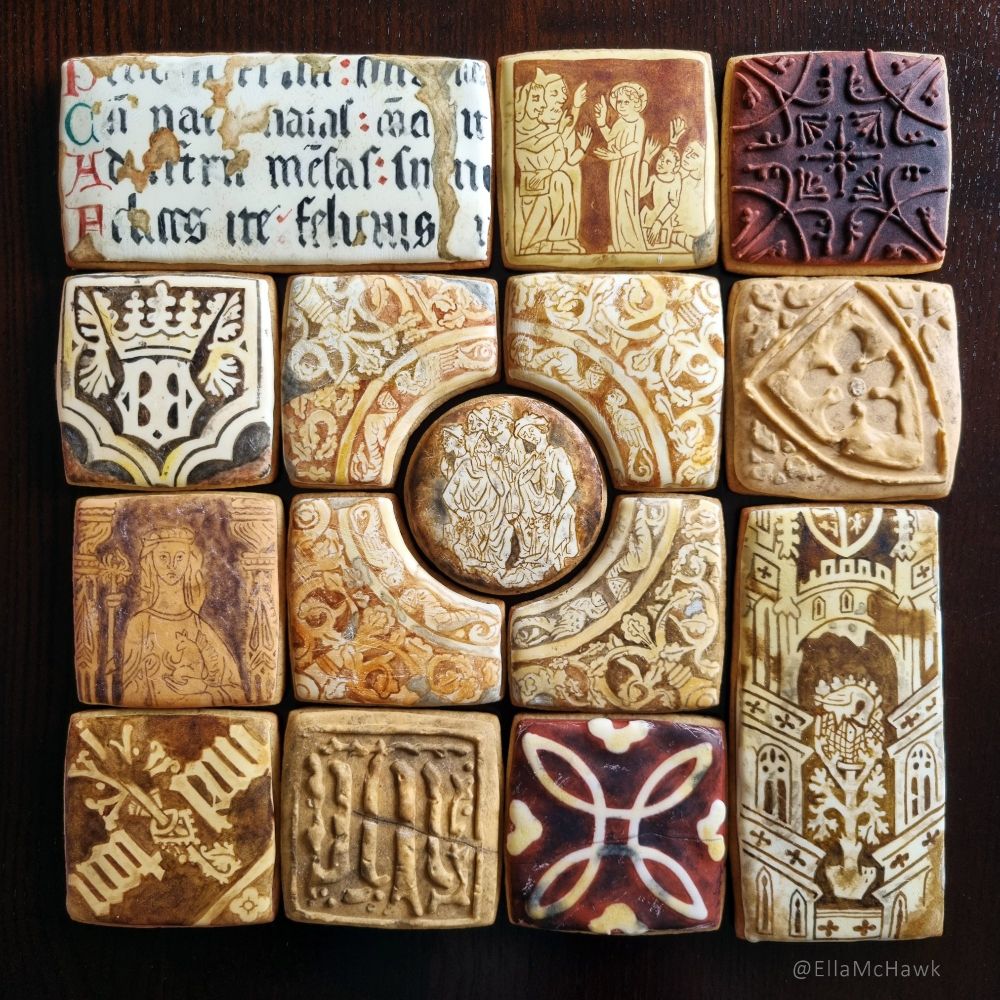
The biscuit recipe was inspired by flavours from the same period: honey, ginger, and clove.
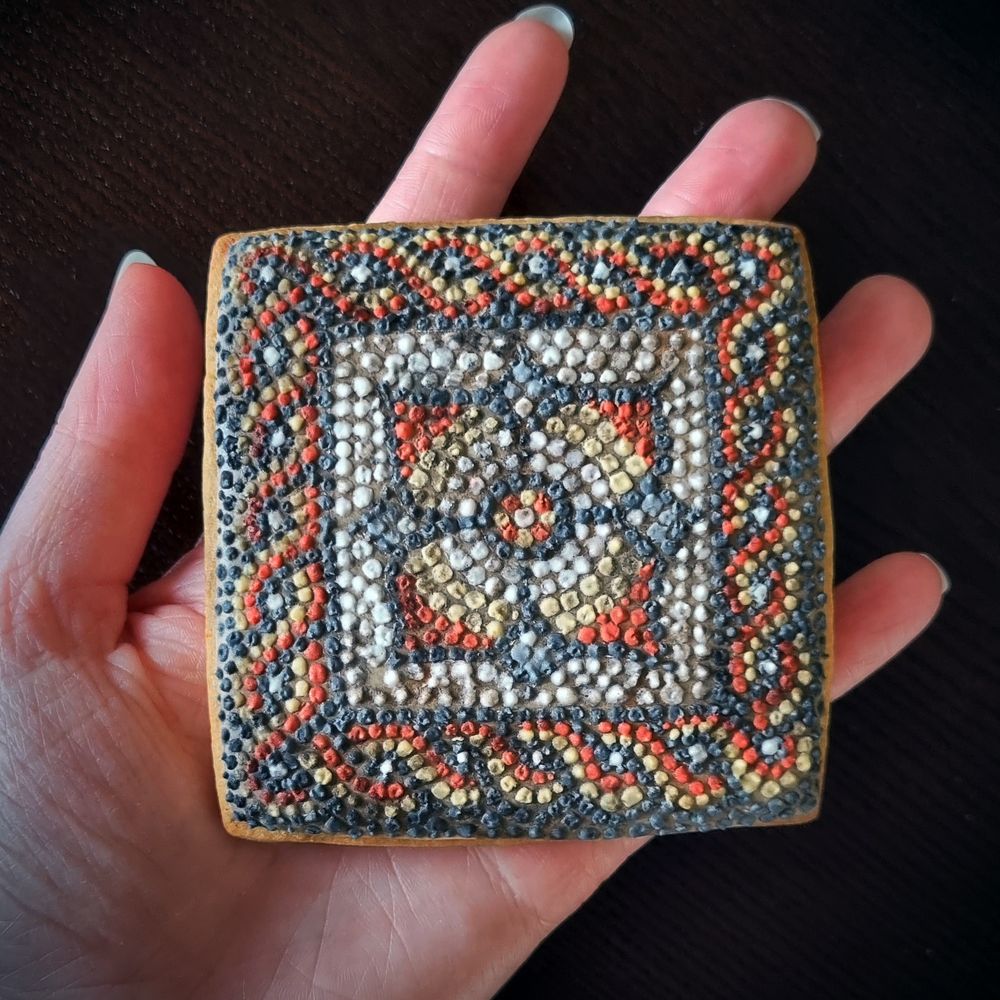
I baked these biscuity sherds on a hemisphere cake tin in an attempt to recreate Ancient Greek pottery fragments in all three dimensions. The originals, dating from c.1600-435 BCE, can be found in the collections of the Ashmolean Museum.

I baked these biscuity sherds on a hemisphere cake tin in an attempt to recreate Ancient Greek pottery fragments in all three dimensions. The originals, dating from c.1600-435 BCE, can be found in the collections of the Ashmolean Museum.
These biscuits are inspired by the weird and wonderful world of medieval illustration.

These biscuits are inspired by the weird and wonderful world of medieval illustration.
One day, I happened upon a photo of all the different book binding tools in the University of Reading's Special Collections conservation workshop. Here are some of them in biscuit form.
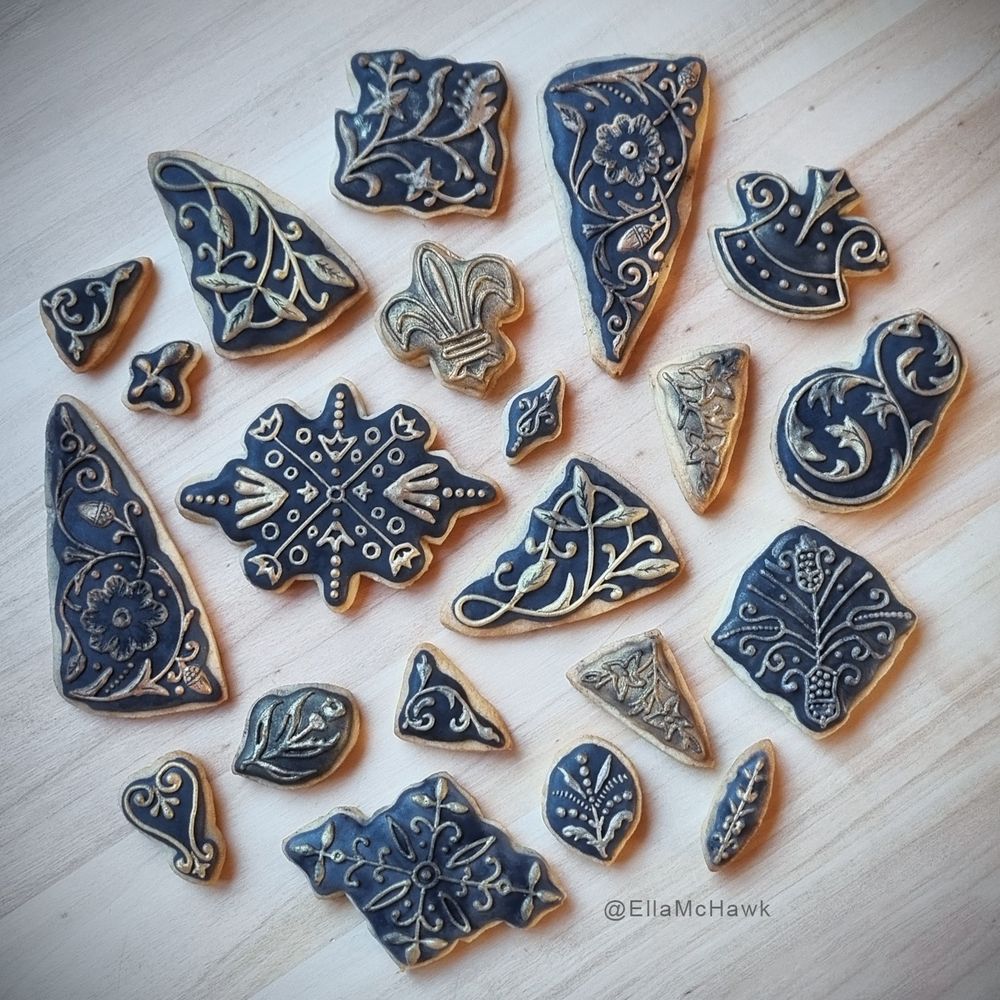
One day, I happened upon a photo of all the different book binding tools in the University of Reading's Special Collections conservation workshop. Here are some of them in biscuit form.
Shakespeare’s First Folio makes three biscuity appearances here. Honourable mentions also to Milton and to Beaumont and Fletcher.

Shakespeare’s First Folio makes three biscuity appearances here. Honourable mentions also to Milton and to Beaumont and Fletcher.
There were hundreds of fabulous examples to choose from in the Victoria & Albert Museum’s online catalogue, but I eventually settled on nine.
These 18th-century ships, shepherds, castles, figures, and flowers brought me joy. I hope they’ll do the same for you, too.

There were hundreds of fabulous examples to choose from in the Victoria & Albert Museum’s online catalogue, but I eventually settled on nine.
These 18th-century ships, shepherds, castles, figures, and flowers brought me joy. I hope they’ll do the same for you, too.
The flavour is orange, cardamom, and vanilla, and the design was painted by hand onto royal icing using food colouring gels and vodka.

The flavour is orange, cardamom, and vanilla, and the design was painted by hand onto royal icing using food colouring gels and vodka.
These biscuits recreate stained glass fragments found a few years ago in the triforium of Westminster Abbey.
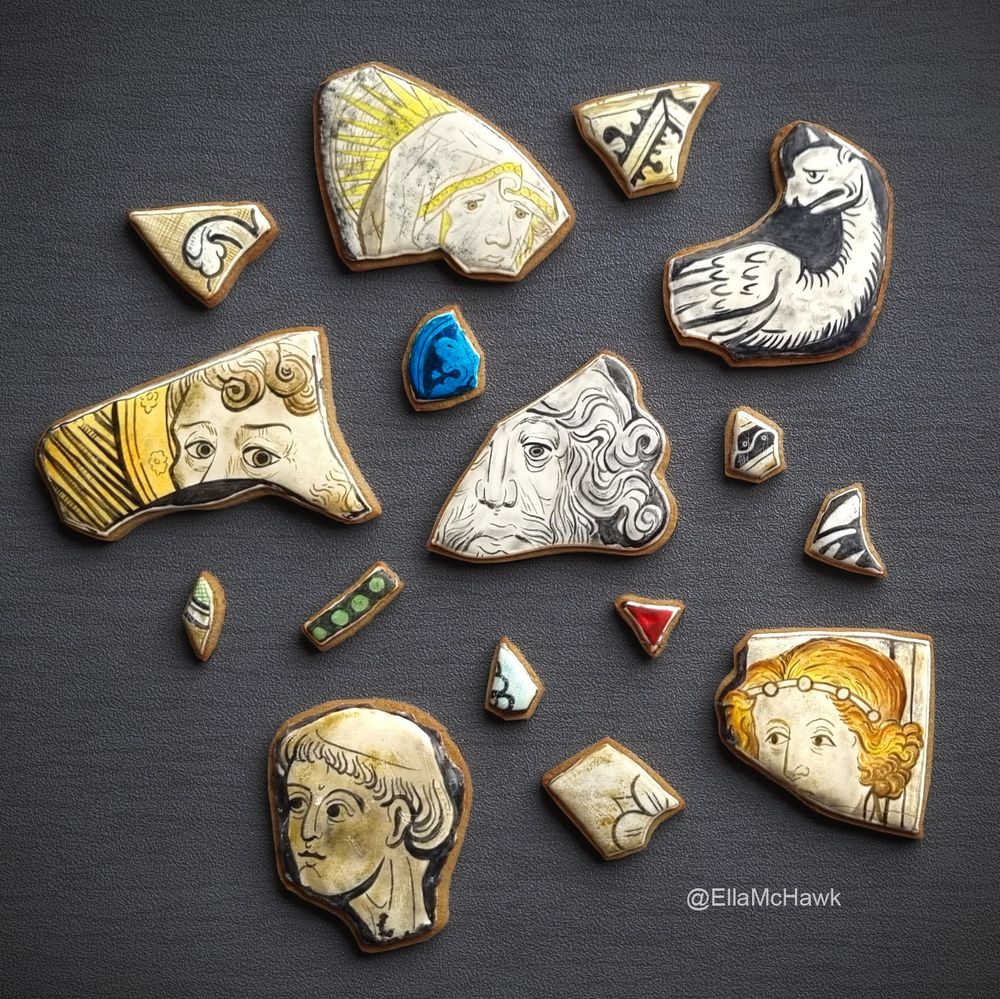
These biscuits recreate stained glass fragments found a few years ago in the triforium of Westminster Abbey.
First up, a set inspired by the delicious designs of William Morris and John Henry Dearle.

First up, a set inspired by the delicious designs of William Morris and John Henry Dearle.
The biscuit (cookie) flavour is based on a Victorian recipe for fig pudding. Ingredients include fig, candied peel, almond & sherry.

The biscuit (cookie) flavour is based on a Victorian recipe for fig pudding. Ingredients include fig, candied peel, almond & sherry.
These festive scraps come from two scrapbooks in the Powerhouse Collection, both thought to have been compiled by children between 1880 and 1890.

These festive scraps come from two scrapbooks in the Powerhouse Collection, both thought to have been compiled by children between 1880 and 1890.
The biscuit (cookie) flavour is based on a Victorian recipe for fig pudding. Ingredients include fig, candied peel, almond & sherry.

The biscuit (cookie) flavour is based on a Victorian recipe for fig pudding. Ingredients include fig, candied peel, almond & sherry.
The design is painted onto royal icing by hand using food colouring gels and vodka.
This biscuit was created using the wonderful Special Collections & Archives at Utah State University.


The design is painted onto royal icing by hand using food colouring gels and vodka.
This biscuit was created using the wonderful Special Collections & Archives at Utah State University.
This biscuit recreates a diagram from Sacrobosco’s ‘De Sphaera’ (c.1550). It could be used to calculate the changing length of daylight hours through the year. 🍪
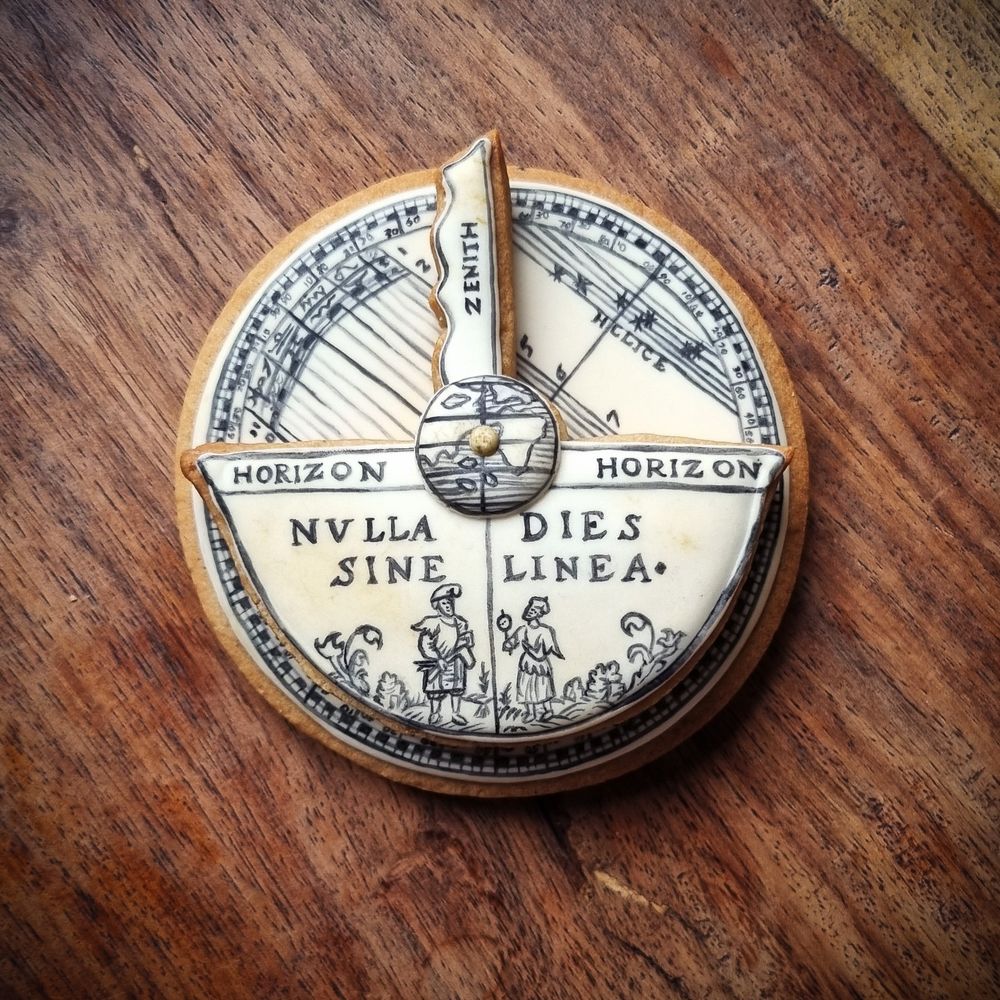
This biscuit recreates a diagram from Sacrobosco’s ‘De Sphaera’ (c.1550). It could be used to calculate the changing length of daylight hours through the year. 🍪

